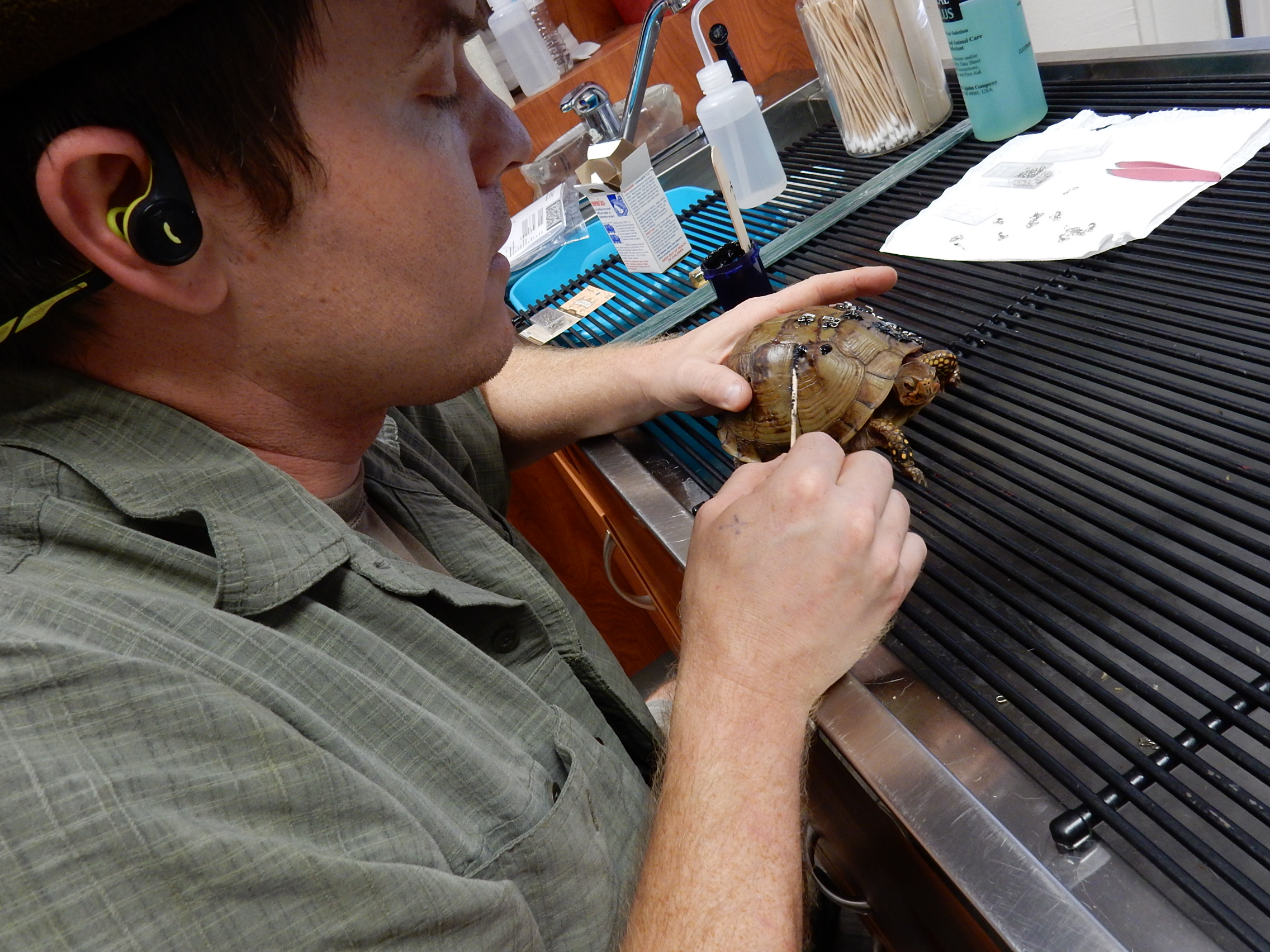Many people seem fascinated by the subject of shell repair. I am not posting to teach anyone how to perform this procedure, but rather as an educational description of one modern method of shell repair. There is always more than one way to skin a cat, and mine is not the only method. However, I have had excellent results with it.
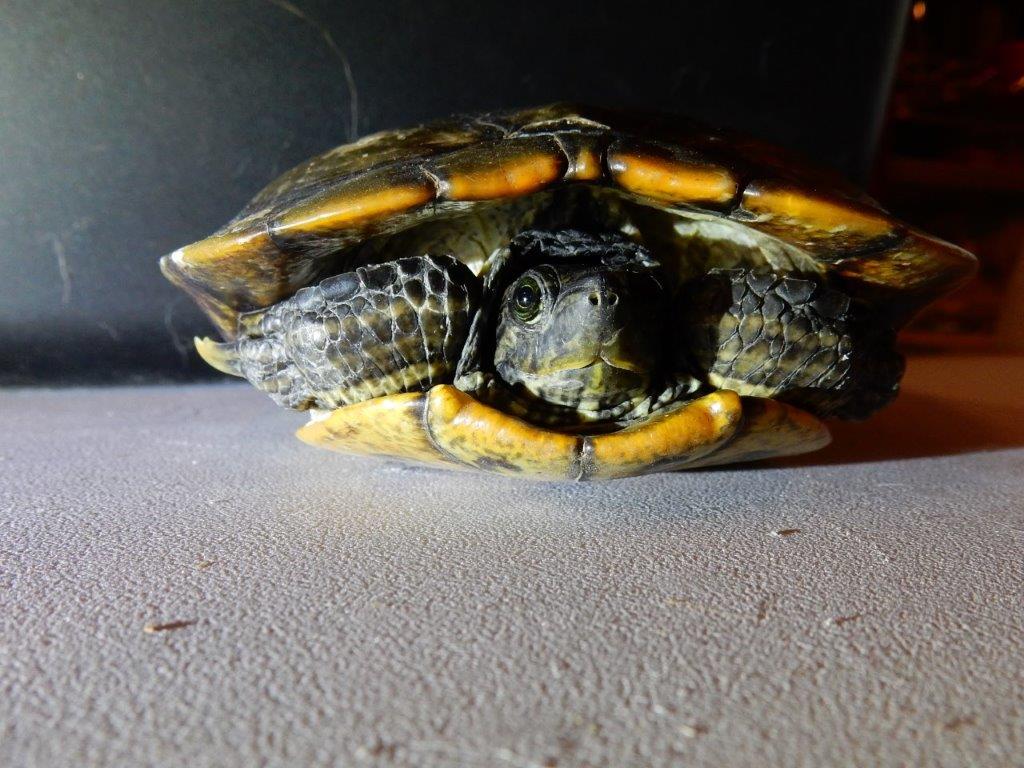
Upon intake, I first do triage and assess the patient's condition and prognosis. In my experience, if a major fracture traverses the spine or if the coelomic membrane has a major breach (internal organs outside the body), the prognosis is poor or grave. Also, if the wound is old enough that there are maggots present, that is a bad sign for several reasons. One reason is the wound has probably remodeled enough that it would need debridement before it is set and the other is that with an open fracture the insect activity is usually affecting organs and sepsis becomes a serious risk. I would recommend that only a doctor or rehabilitator with a fair amount of shell repair experience attempt rehabilitation with any wound in which the above situations are present. In the Trachemys pictured, the fracture did traverse the spine, but the intersection occurred far to the anterior of the carapace, and that area was still holding together fairly well, so I deemed his prognosis to still be fair to good. He did make a full recovery and was released a couple months later. 🙂
For the purposes of this post, we will assume that we are dealing with a fresh wound and a prognosis of fair or better. I typically do a subcutaneous administration of pain medication and antibiotics at this point. In my experience, an anesthetic is generally not warranted for most shell repairs.
I make sure the wound is as clean as I can get it, usually by flushing with saline and sometimes a gentle scrubbing, if needed. Chlorhexidine antiseptic wound cleaner is sometimes indicated, but I do not use it in situations where it is likely to enter the patient's body, as that can cause healthy cell death. The fracture should be as clean as possible with no foreign matter present. I generally clean the shell around the fracture with isopropyl alcohol to both sterilize the area and to help the epoxy get the best bond possible. In cases of aquatic turtles where algae is present on the shell, that will either need to be removed so a good bond is possible, or another method such as stainless screws will probably need to be employed. Any loose scute layers, if present, will need to be peeled off. The gist is that in order to affix any fastening point to the shell, there must be a clean and stable attachment point.
I then prepare my instruments and materials. I have a range of stainless instruments that I employ if needed to realign the shell. Personally, I bought sculpting tools from Hobby Lobby that serve the same purpose as medical instruments, but at a fraction of the cost. I also use Marine-Tex Epoxy (available at boating supply stores), brassiere hooks (also from Hobby Lobby), corrosion-resistant jewelry wire of a thickness and type that allows for a fair amount of manipulation without breakage, and a small pair of pliers and wire cutters and other assorted tools like forceps and tweezers.
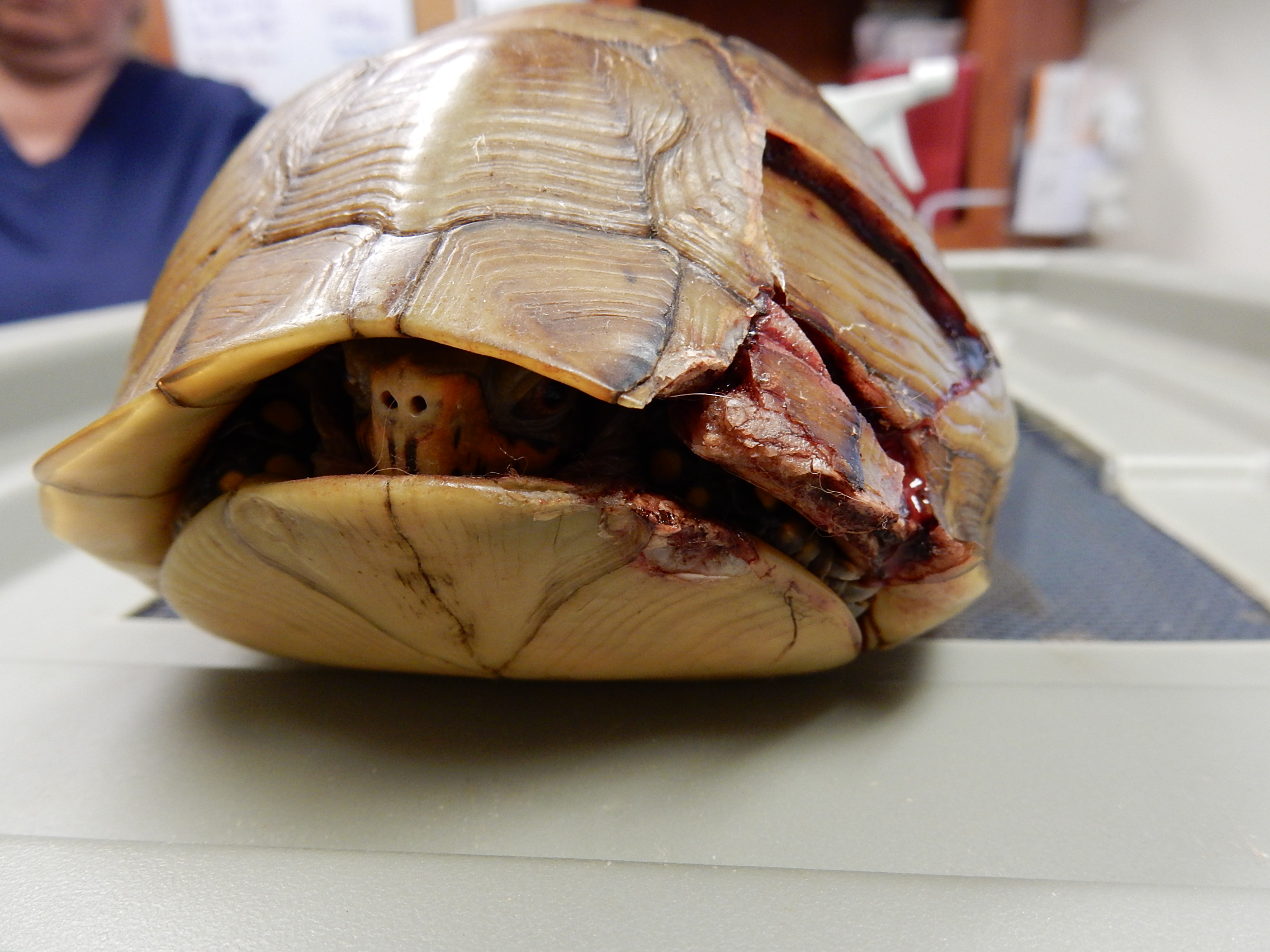
I then mix the epoxy according to the label instructions. I use the marine epoxy because it is slow-curing. As such, it generates less heat than the faster curing formulas, which I believe helps prevent any further damage to the shell. However, if I was unable to get marine epoxy, I would feel confident using a more standard variety, except for the five-minute formula, which I feel would surely get too hot. I add small dollops of epoxy along either side of the fracture(s) in such a way as to provide anchor points where needed. These are opposite each other like holes for shoelaces and not staggered. I find that the dollops are most easily applied with the handle side of cotton-tipped applicators, but a toothpick or similar item could be used.
The goal is to apply it where needed without making a mess. In some circumstances, it is possible to just apply a line of adhesive on either side of the fracture. The epoxy should not be applied directly over the wound, as healing occurs more easily if the wound is allowed to “breathe.” For repairs to the plastron (underside), some method must be employed to immobilize the animal while the adhesive sets. Simply resting the animal on its back is not a suitable method, as many chelonians have difficulty breathing in this position. I typically just tape them to something of the appropriate size to keep them from being able to touch the surface beneath themselves.
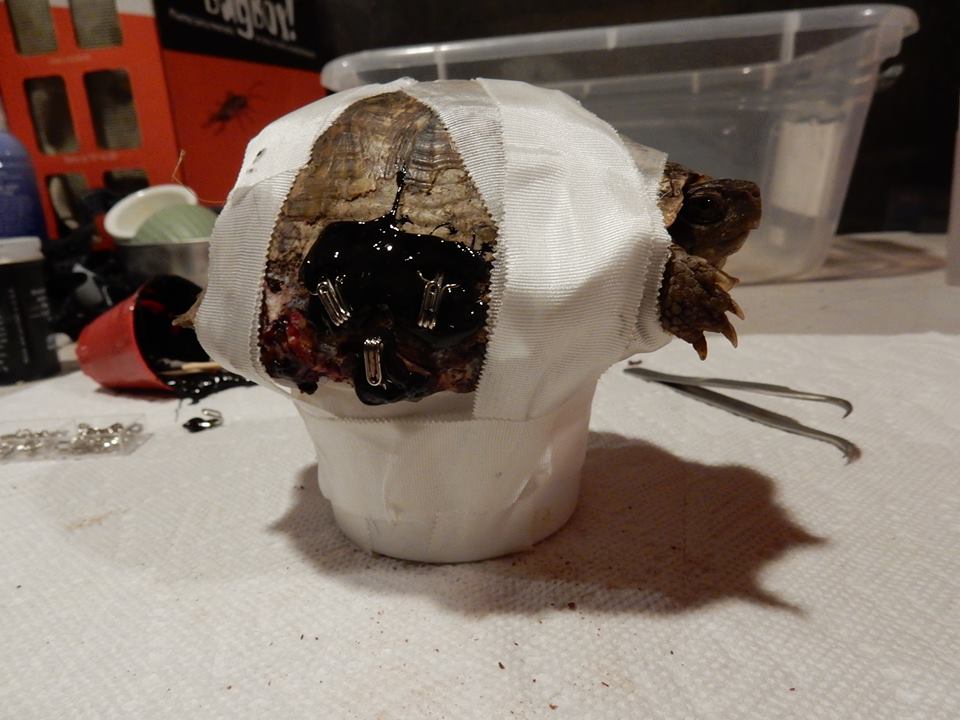
I then prepare my bra hooks. The eyes are not used, just the hooks. Hooks come in different sizes ranging from Kiera Knightly to Dolly Parton. I like to use the largest ones that will fit in the area I am working. Generally, this means smaller hooks for smaller animals and vice versa. Larger hooks provide more surface for the epoxy to grab, and it is easier to get the wire positioned with the large sizes. However, on a small animal, using large hooks would tend to have the supports spread to far apart. Size and spacing are situation dependent, and some discretion is required. Experience is the only thing I know of that makes this easier.
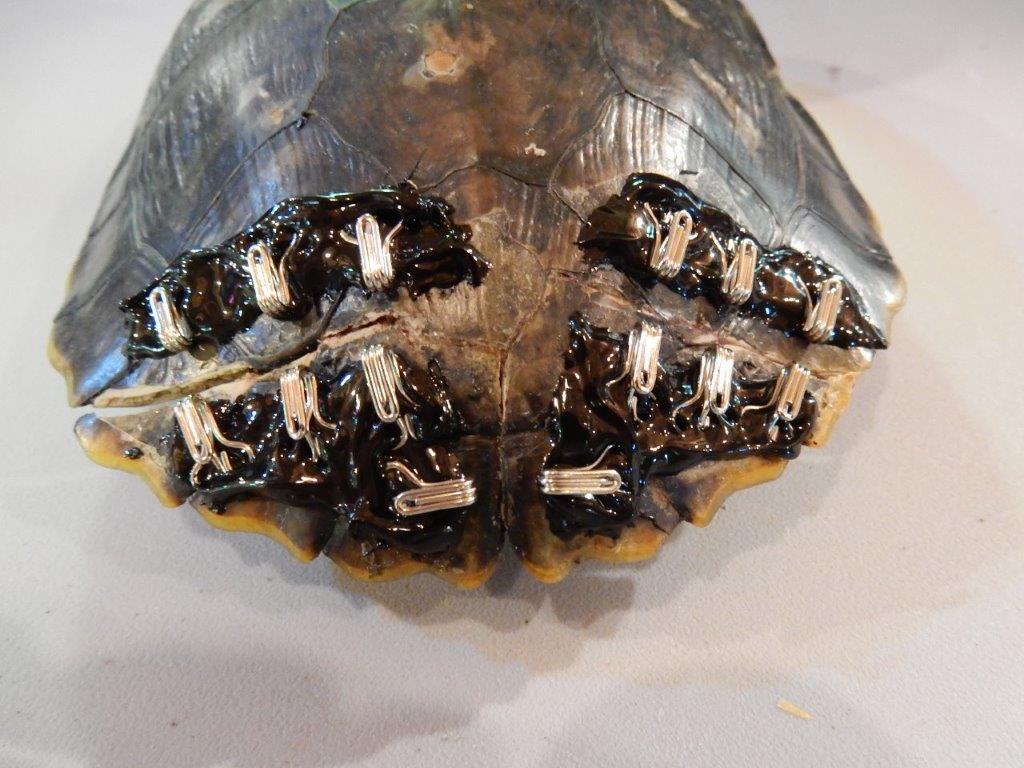
I then set the bra hooks in the epoxy, with the curved ends facing each other across the fracture. I tamp them down so that they are firmly embedded in the epoxy, but care must be taken that the epoxy does not clog up the open portion of the hook, which would make it difficult to insert the wire later. I usually try to smear a small amount of the epoxy over the back of the hook to help prevent them tearing out when force is applied. If a fracture turns a corner, it is possible to have two hooks on the outside and one on the inside of the angle, with the inside hook at a 45 degree angle to the others. This is so that two attachments can pull evenly on the one inside anchoring point. The epoxy must then be given time to cure. I keep the unused portion of the epoxy handy, and poke at it periodically to see when it is fully hardened, indicating that the epoxy on the animal is ready.
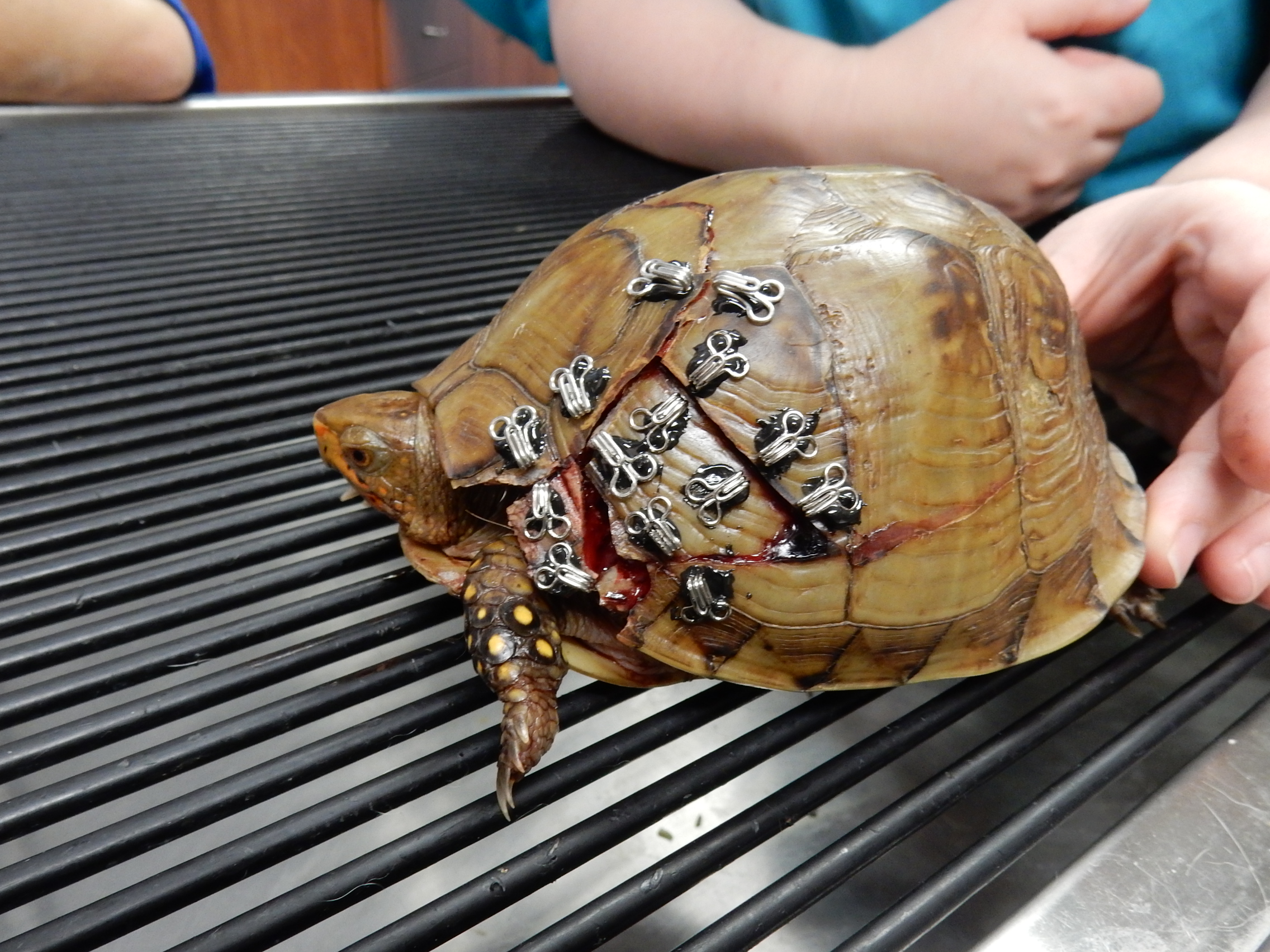
I then wrap the jewelry wire in a figure eight pattern to join two hooks at a time. I cut off the excess and use the pliers to twist the ends slowly until the right amount of pressure is achieved. Again, this is something that experience helps with. The goal is to bind the fracture together with enough force that it becomes stable to allow for remodeling, but not so tight as to risk pressure necrosis. It is not necessary for any small gaps to be eliminated if there are small portions of shell missing, as granular tissue will build up over these areas in time. Those areas will need to be monitored however, and any gaps will increase the time until the animal is releasable.
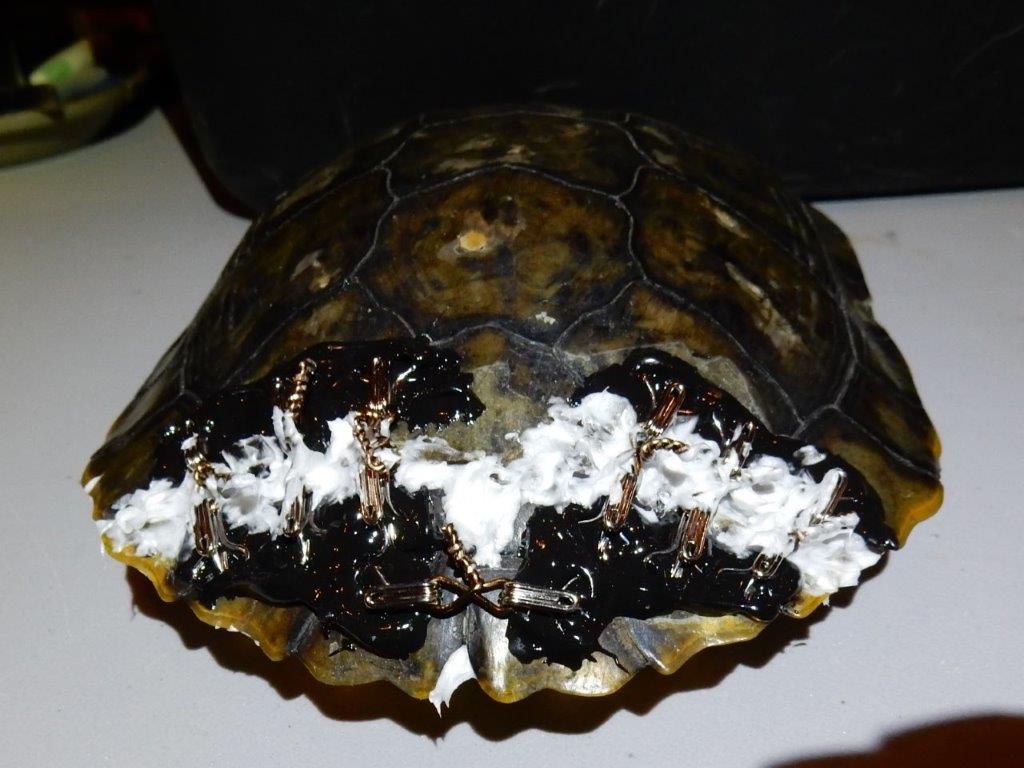
I then paint the length of the fracture with Silver sulfadiazine cream (Rx only), which is used with human burn patients, but also works very well and safely with reptile and even amphibian patients. This helps protect the patient from further infection, but it does need to be cleaned off and reapplied periodically to prevent an anaerobic environment along the wound.
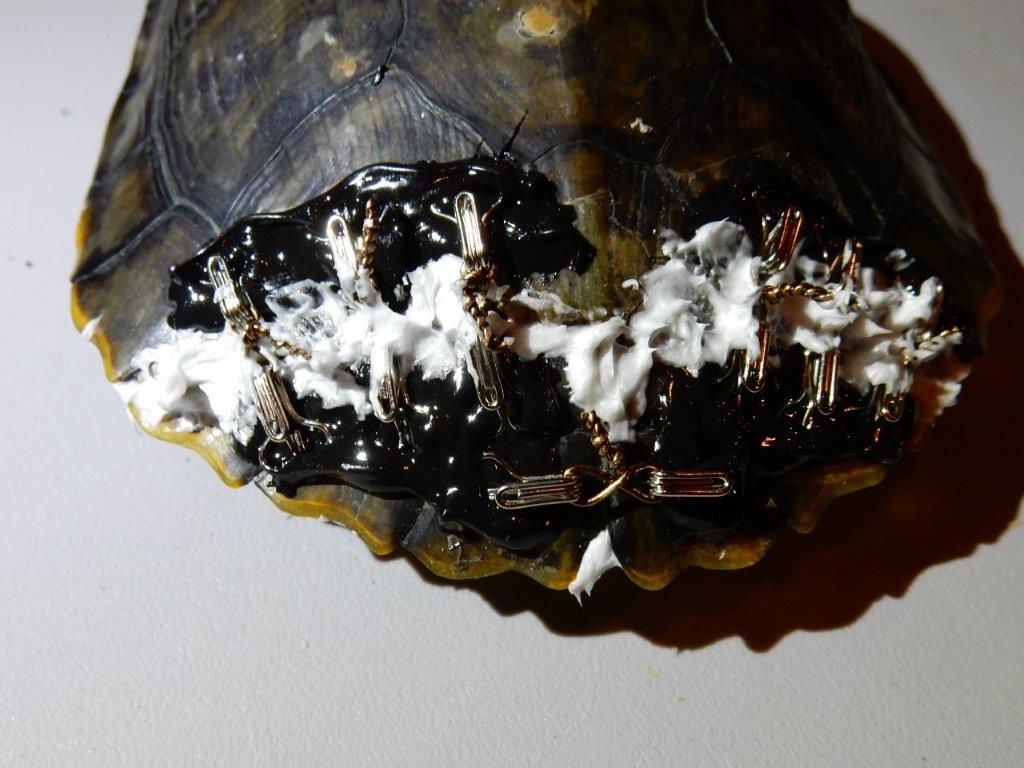
After that it is a matter of keeping the patient stable and healthy while healing occurs. In the case of aquatic turtles, I do keep them out of water for several days. I give them baths to drink and eat (most aquatic turtles will only eat in the water), but keep them dry-docked to prevent unsterile water from soaking into the wound until it can close. Fractures can take anywhere from weeks to months to fully heal, depending on the severity of the wound. Chelonians are remarkably resilient animals, and I have had animals that were broken like an egg heal quite well.
Again, this post is purely for educational or entertainment purposes, as in most places a person must be either a veterinarian and/or wildlife rehabilitator to perform procedures on wild animals. If you have an animal in need of a procedure like this, you can visit these pages for help:
If you would like to help L.E.A.R.N. do this type of work and other rescue, rehabilitation and education, visit our Get Involved page or our Donations page.
